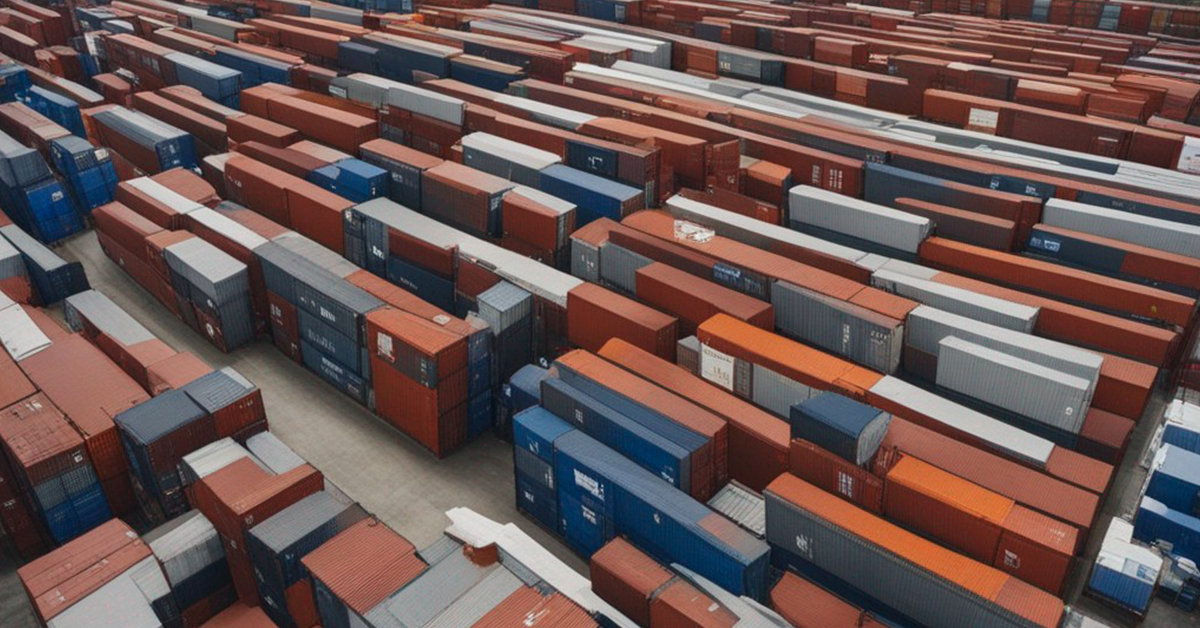WHAT ARE THE DIFFERENT TYPES OF CONTAINER LEASING ARRANGEMENTS?
 Containers aren't just steel boxes; they're pathways to global trade and business growth. In this blog, we delve into the captivating world of container leasing, uncovering the diverse arrangements that fuel international commerce. Get ready to embark on a journey through the various types of container leasing, interpreting the options that drive supply chains and economic landscapes forward.
Containers aren't just steel boxes; they're pathways to global trade and business growth. In this blog, we delve into the captivating world of container leasing, uncovering the diverse arrangements that fuel international commerce. Get ready to embark on a journey through the various types of container leasing, interpreting the options that drive supply chains and economic landscapes forward.
Finance Lease
Finance Lease, also known as Lease Purchase, entails the lessee assuming ownership of the container. The lessee becomes the documented legal owner and titleholder of the shipping containers, where he assumes most of the risks and rewards associated with its ownership. This ownership arrangement enables the lessee to account for depreciation and interest expenses related to the containers. Given that finance leases are categorized as "leased-financed" assets, they are listed as "liabilities" on the balance sheet. This inclusion enhances a company's net value but also influences the taxable income generated by the owned asset. The lessee also bears the responsibility for maintaining and insuring these containers. Upon the conclusion of the finance lease period, the lessee holds the choice to acquire the containers from the lessor at a pre-determined price fixed during the lease agreement's commencement.
Master Lease
Master Leases, often known as Short to Medium-term Leases, fall within the Full-service Leases category, offering flexibility without imposing restrictions on the minimum container count. The length of the lease can be amended, and the lessor takes on the duties of upkeep, repairs, and relocating the containers. The arrangement involves an accounting framework involving credits and debits between the parties based on the condition of the container upon return. Additionally, the lessor makes efforts to distribute the containers to meet the lessee's requirements, ensuring a steady supply of empty containers at designated pickup locations.
In Master Lease Agreements, fundamental terms are established, encompassing factors like daily rental costs, available container types, depot-specific quantities, drop-off and collection centres, payment schedules, and more. The lessee isn't obligated to utilize the containers until they are picked up from a depot, and the contractual obligations commence solely when the lessee takes possession of the container. Each container obtained under the primary Master Lease agreement is documented through an individual, separate contract.
Long-Term Lease
Referred to as a Dry Lease, this leasing arrangement usually spans 5 or more years for newly acquired containers and 1 to 5 years for pre-owned containers. They are typically linked with the extended use of containers by transportation providers. Often, the lease term commences shortly after the leasing company acquires new containers. The lessor also benefits from gradually depreciating their capital investment value over the lease's duration. The lessee bears the responsibility for maintenance, repair, and container repositioning.
Short-Term One-Way Lease
A "Short-term one-way lease" is a container leasing arrangement where containers are rented briefly and moved in one direction. The lessee uses the containers for transporting goods but doesn't return them to the original location. The lease lasts a few weeks to months, meeting specific transport needs for projects or trade. Unlike long-term leases, one-way leases involve leaving containers at the destination, avoiding return logistics. They suit businesses with temporary transport needs, providing quick container access without long commitments. Despite higher daily costs compared to long-term leases, one-way leases save on return expenses and suit locations with container shortages due to trade imbalances. Maintenance responsibilities stay with the lessor, allowing lessees to focus on transport. In short, these leases efficiently meet shipping needs without long commitments or return hassles.
Container leasing arrangements play a crucial role in the modern supply chain, offering businesses the flexibility to manage their container fleets efficiently. Finance leases provide the option of ownership, while master leases allow dynamic adjustments to container fleets. Long-term leases offer stability for steady shipping needs, and short-term one-way leases cater to specific, temporary demands. Choosing the right type of container leasing arrangement depends on a company's operational requirements, financial goals, and overall logistics strategy.
VS&B Containers offers a wide variety of containers, encompassing both newly built and used, and custom-built units that can be directly shipped from our manufacturing facilities to your preferred destinations across the world. We also operate a lease fleet of over 30,000 containers for both international leasing and domestic leasing (within India). If you have container requirements, do drop us an email at enquiry@vsnb.com and a member of our team will reach out to assist you.
Furthermore, iInterchange Systems (A VS&B group company) provides state-of-the-art software solutions tailored specifically to meet the needs of container shipping and logistics enterprises. Please visit www.iinterchange.com or drop us an email at sales@iinterchange.com for more details.
- Log in to post comments






